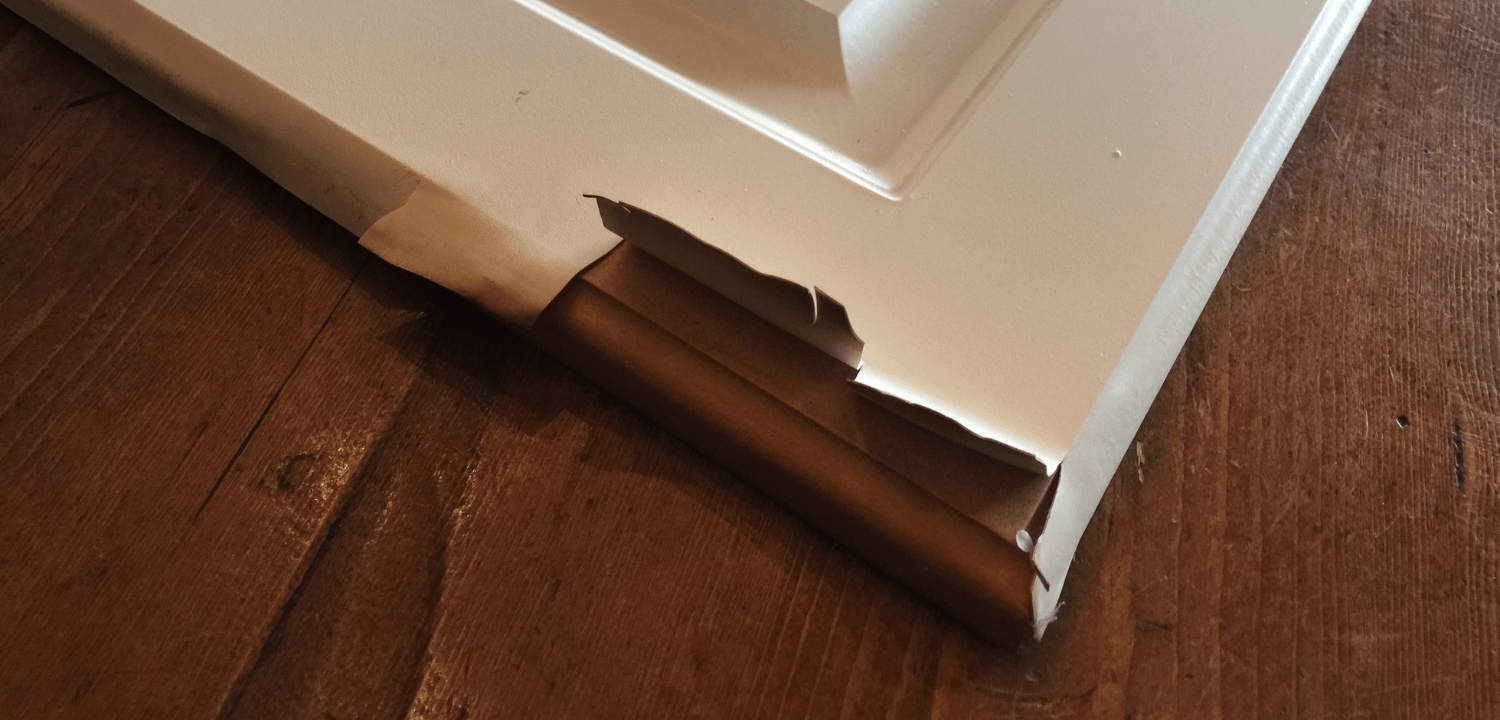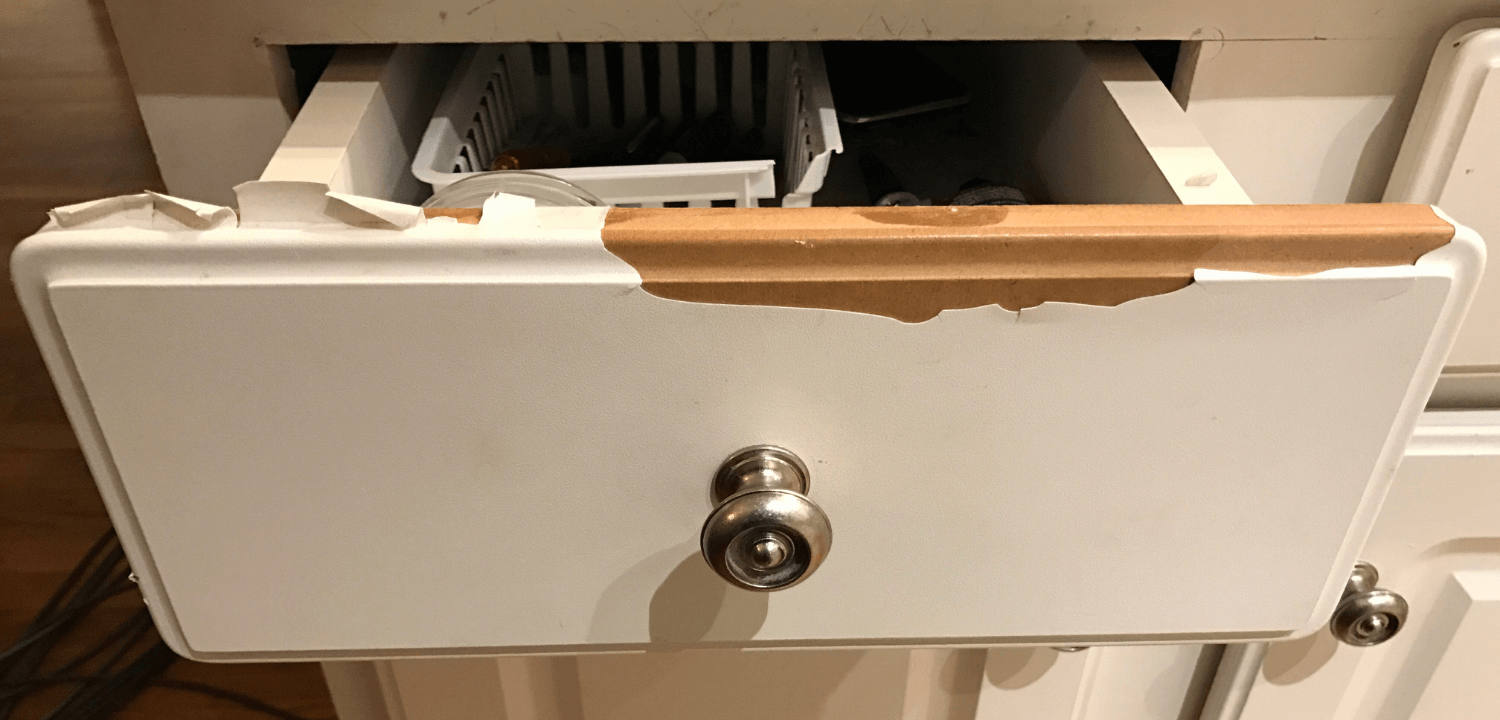Understanding Thermofoil Cabinet Doors: Fix Thermofoil Cabinet Doors

Thermofoil cabinet doors are a popular and affordable choice for kitchen and bathroom cabinets. They offer a sleek, modern look and are relatively easy to clean. However, understanding their construction and potential issues is crucial for making informed decisions.
Construction and Materials, Fix thermofoil cabinet doors
Thermofoil doors consist of a core material, typically MDF (Medium-Density Fiberboard) or particleboard, covered with a thin layer of PVC (Polyvinyl Chloride) film. This film is heated and pressed onto the core, creating a smooth, sealed surface. The PVC film comes in various colors, patterns, and finishes, mimicking wood grain or solid colors.
Common Issues with Thermofoil Doors
Thermofoil doors, while durable, are susceptible to certain issues due to their construction and materials. Understanding these issues can help you prevent them or address them effectively.
Peeling and Bubbling
Peeling and bubbling of the PVC film are common problems with thermofoil doors. These issues arise due to improper installation, moisture exposure, or heat damage.
- Improper Installation: If the film is not properly adhered to the core during manufacturing or installation, it can loosen and peel over time.
- Moisture Exposure: Excessive moisture can cause the PVC film to expand and contract, leading to peeling or bubbling. This is especially common in areas with high humidity, like kitchens and bathrooms.
- Heat Damage: Exposure to direct sunlight or excessive heat can also cause the PVC film to become brittle and peel.
Discoloration
Discoloration of thermofoil doors can occur due to several factors, including:
- UV Exposure: Prolonged exposure to ultraviolet (UV) rays from sunlight can cause the PVC film to fade or yellow over time.
- Cleaning Products: Using harsh cleaning products or abrasive materials can damage the PVC film, leading to discoloration.
- Age: Like any material, thermofoil doors can naturally discolor over time due to oxidation and other aging processes.
Troubleshooting and Repair Techniques

Thermofoil cabinet doors are known for their durability and resistance to moisture, but they are not immune to wear and tear. Over time, issues like peeling, bubbling, or scratches can arise. Fortunately, many of these problems can be addressed with simple DIY solutions. This section will guide you through common troubleshooting techniques and repair methods for thermofoil cabinet doors.
Repairing Peeling or Bubbling Thermofoil
Peeling or bubbling thermofoil is a common problem that can occur due to moisture damage, improper installation, or even just age. Repairing these issues involves smoothing out the affected area and re-adhering the thermofoil to the substrate.
- Identify the cause: Determine if the peeling is due to moisture damage, improper installation, or age. Moisture damage often manifests as warping or swelling, while improper installation can lead to uneven application. If the thermofoil is simply peeling due to age, it may be necessary to replace the door entirely.
- Prepare the surface: Clean the affected area with a mild detergent and water. Allow the surface to dry completely before proceeding. If there are any loose pieces of thermofoil, gently scrape them off with a putty knife.
- Apply adhesive: Use a high-quality contact adhesive specifically designed for thermofoil. Apply a thin, even layer of adhesive to both the back of the thermofoil and the substrate. Allow the adhesive to become tacky before proceeding.
- Re-adhere the thermofoil: Carefully press the thermofoil back onto the substrate, ensuring it is smooth and free of bubbles. Use a roller to smooth out any wrinkles or air pockets. Allow the adhesive to cure completely before using the door.
Prevention and Maintenance Tips

Preventing damage and ensuring longevity for your thermofoil cabinet doors involves proactive measures. Regular maintenance, proper cleaning techniques, and a few preventative steps can significantly extend their lifespan and preserve their aesthetic appeal.
Protecting Thermofoil Doors from Damage
Preventing damage is crucial for maintaining the integrity of your thermofoil doors. Here’s a list of preventative measures to protect them:
- Avoid Harsh Chemicals: Using abrasive cleaners, solvents, or strong chemicals can damage the thermofoil’s surface. Stick to mild, pH-neutral cleaners specifically designed for thermofoil or laminate surfaces.
- Protect from Heat: Direct heat exposure, such as from hot pans or appliances, can cause discoloration or warping. Use trivets or heat-resistant mats to protect the doors from heat sources.
- Prevent Scratches: Sharp objects, like knives or utensils, can easily scratch the thermofoil surface. Be cautious when opening and closing cabinets, and consider using cabinet door bumpers to prevent scratches from handles.
- Avoid Moisture: Excessive moisture can damage the thermofoil, causing peeling or warping. Wipe up spills promptly and avoid placing wet items directly on the doors.
- Proper Handling: When cleaning or moving furniture, handle the doors gently to avoid dents or scratches. Avoid pushing heavy objects against the doors.
Proper Cleaning and Care
Proper cleaning is essential for maintaining the pristine look of your thermofoil cabinet doors. Here’s a step-by-step guide for cleaning thermofoil surfaces:
- Gather Supplies: You’ll need a soft, microfiber cloth, warm water, a mild dish soap, and a clean, dry towel. Avoid using harsh sponges or abrasive cloths.
- Prepare the Cleaning Solution: Mix a few drops of mild dish soap with warm water in a small bowl.
- Clean the Doors: Dip the microfiber cloth into the cleaning solution, wring out excess water, and gently wipe the doors from top to bottom. Avoid soaking the doors.
- Dry Thoroughly: Use a clean, dry towel to thoroughly dry the doors, ensuring no water droplets remain.
- Regular Cleaning: Clean your thermofoil doors regularly, at least once a week, to prevent dirt and grime buildup.
Maintaining Thermofoil Doors for Longevity
Maintaining your thermofoil doors is essential for extending their lifespan and preserving their appearance. Here are some key maintenance tips:
- Regular Inspection: Inspect the doors periodically for any signs of damage, such as scratches, dents, or peeling. Address any issues promptly to prevent further damage.
- Tighten Hinges: Loose hinges can cause doors to sag or rub against the cabinet frame. Tighten the hinges periodically to ensure proper alignment and prevent damage.
- Lubricate Hinges: Lubricate the hinges with a light oil, such as WD-40, to ensure smooth operation and prevent squeaking.
- Replace Damaged Parts: If you notice any significant damage, such as a large dent or a peeling section, consider replacing the damaged part.
Fix thermofoil cabinet doors – Reviving thermofoil cabinet doors can be a rewarding project, adding a touch of personality to your kitchen. If you’re looking for inspiration beyond traditional cabinet finishes, consider incorporating elements of diy hipster bedroom decor into your kitchen design. This could involve using bold colors, geometric patterns, or even repurposed materials to create a truly unique and stylish look for your cabinets.
If you’re looking to refresh your kitchen without a full renovation, fixing thermofoil cabinet doors can be a great option. Thermofoil doors are a popular choice in Canada, and with a little care, they can look as good as new.
For inspiration on new styles and materials, you can browse the wide selection of kitchen cabinet doors in Canada. Whether you’re considering a simple touch-up or a complete replacement, understanding the options available can help you make informed decisions to achieve your desired kitchen look.
